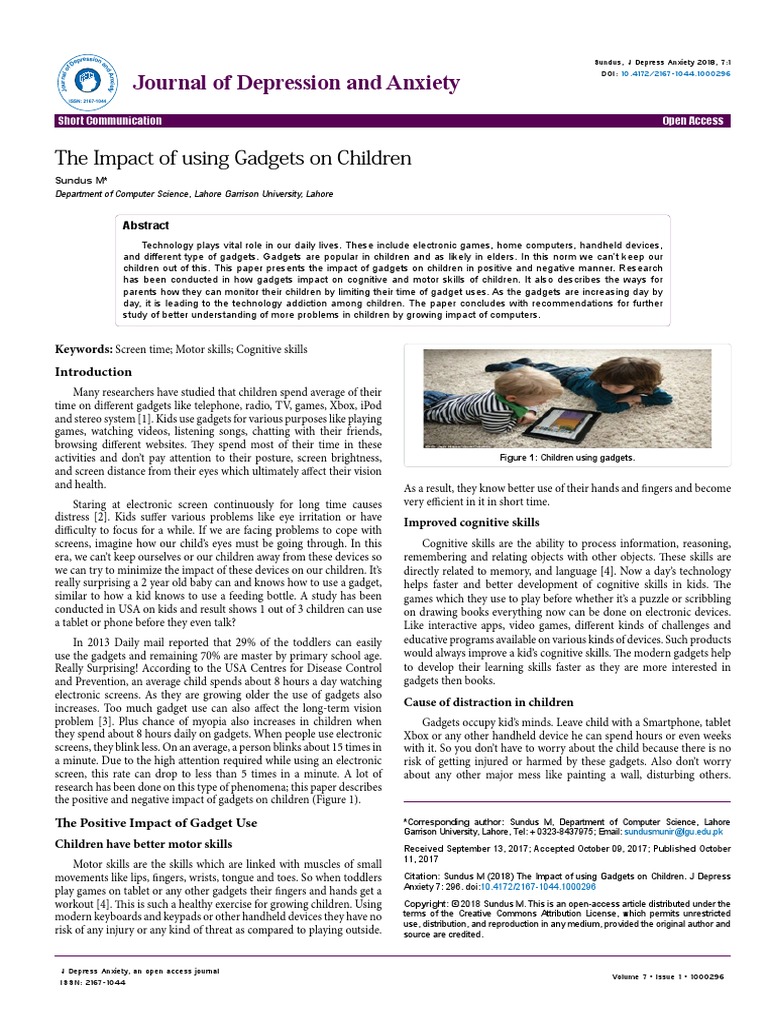
Can gadgets cause ADHD? This is a question that has been debated extensively by parents, educators, and researchers. While there’s no definitive answer, the potential link between excessive screen time and attention deficit hyperactivity disorder (ADHD) is a significant concern. This article delves into the existing research, examines the potential impacts of gadgets on a child’s development, and explores strategies to help ensure healthy digital habits. We’ll explore the complexities of this issue, considering potential warning signs and ultimately, providing practical steps you can take.
Understanding ADHD
What is ADHD?
ADHD, or Attention Deficit Hyperactivity Disorder, is a neurodevelopmental condition affecting millions of children and adults worldwide. It’s characterized by persistent inattention, hyperactivity, and impulsivity. These symptoms can significantly impact an individual’s academic performance, social interactions, and overall well-being. Early diagnosis and intervention are crucial for managing ADHD effectively.
Common Symptoms of ADHD
Common symptoms in children include difficulty focusing, completing tasks, following instructions, and managing emotions. Hyperactivity may manifest as excessive fidgeting, restlessness, or difficulty staying seated. Impulsivity can lead to interrupting conversations, acting before thinking, and difficulty waiting for turns. It’s important to remember that these symptoms can vary in severity and presentation. The prevalence of ADHD varies across different communities and demographics. These factors can affect symptom expression and treatment.
The Potential Link Between Gadgets and ADHD
Correlation vs. Causation
While anecdotal evidence and some studies suggest a correlation between gadget use and ADHD symptoms, it’s crucial to differentiate between correlation and causation. A correlation simply implies a relationship between two factors, but it doesn’t necessarily mean one causes the other. Many other factors, like genetics, environmental influences, and lifestyle choices, can also contribute to ADHD.
Potential Impacts of Excessive Screen Time
Excessive screen time, particularly during formative years, can potentially contribute to certain behaviors sometimes associated with ADHD. Extended periods of screen use can lead to reduced attention spans, difficulties with impulse control, and an over-reliance on instant gratification. The prevalence of ADHD symptoms is increasing, perhaps coinciding with the increased use of technology among young people.
Research and Studies on Gadget Use and ADHD
Current Evidence
Numerous studies have investigated the relationship between gadget use and ADHD. However, results are often mixed, and some studies raise questions regarding methodology and limitations. Large-scale, longitudinal studies are needed to establish a clearer understanding of the long-term effects of gadget use on children’s development and potential ADHD symptoms. The debate about this relationship underscores the need for continued research.
Factors Influencing the Relationship
Several factors influence the relationship between gadget use and ADHD. These factors include the specific type of gadget, the amount of time spent using it, the child’s individual temperament, and the overall environment. The impact of specific types of media consumption needs to be investigated more rigorously. Further studies must be performed in this regard.
Strategies for Healthy Digital Habits
Establishing Boundaries
Setting clear limits on screen time can help minimize potential negative impacts. Create a structured daily schedule that includes designated gadget-free time periods for tasks like reading, playing outdoor games, or engaging in face-to-face interactions with family and friends. Parents must be proactive in promoting healthy digital habits.
Promoting Balanced Activities
Encourage diverse activities that foster creativity, social interaction, physical activity, and cognitive development. Prioritize structured play, outdoor activities, creative pursuits, and meaningful social connections to balance screen time. Encouraging diverse activities can help promote mental and physical health.
Supporting Children’s Development
Importance of Supervision
Regular supervision and open communication with children are essential for understanding and addressing potential concerns. Engage in discussions about their digital habits, and encourage critical thinking about the content they consume and how it impacts them.
Seeking Professional Help
If you have concerns about your child’s development or behavior, it’s crucial to consult with a qualified pediatrician or mental health professional. They can provide personalized guidance and support. Early identification is critical in addressing potential issues.
In conclusion, while some studies suggest a potential link between certain gadgets and ADHD symptoms, definitive proof is lacking. More research is needed to fully understand the complex interplay between technology and child development. If you have concerns about your child’s development or behavior, it’s crucial to consult with a qualified pediatrician or mental health professional. They can provide personalized guidance and support.